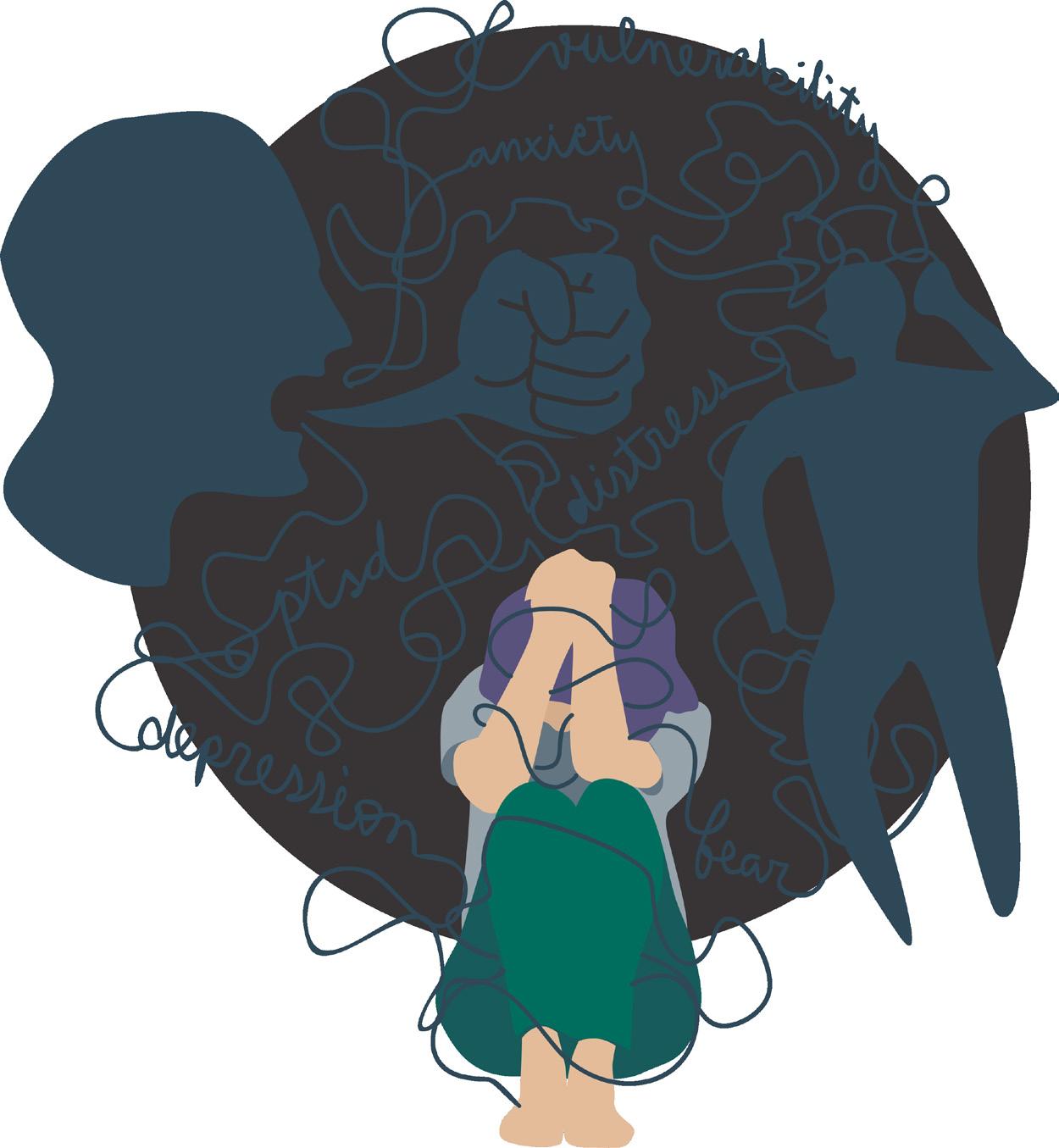
5 minute read
BACKGROUND DOMESTIC VIOLENCE
The UN defines DV as “a pattern of behavior […] that is used to gain or maintain power and control over an intimate partner,” also referred to as domestic abuse or intimate partner violence.
When this abuse reaches the extreme, it may result in murder. The word femicide or feminicide is applied to the killing of a woman who has been victim of domestic violence, usually perpetrated by her male intimate partner.
Advertisement
Femicides not only brutally destroy a family nucleus but also significantly alter the normal development of the orphaned children, parents, and community, while constituting a risk of perpetuating the violence and poverty model.
Notably, during 2020 and arguably because of the COVID-19 pandemic, homicides declined in most Latin American countries (Figure 2). However, the pandemic has generated additional risks for victims of DV as they have been confined with their abusers for the most part of 2020 and going into 2021, which in many cases may result in more severe, cruel, and frequent abuse as well as a greater difficulty for victims to ask for help.
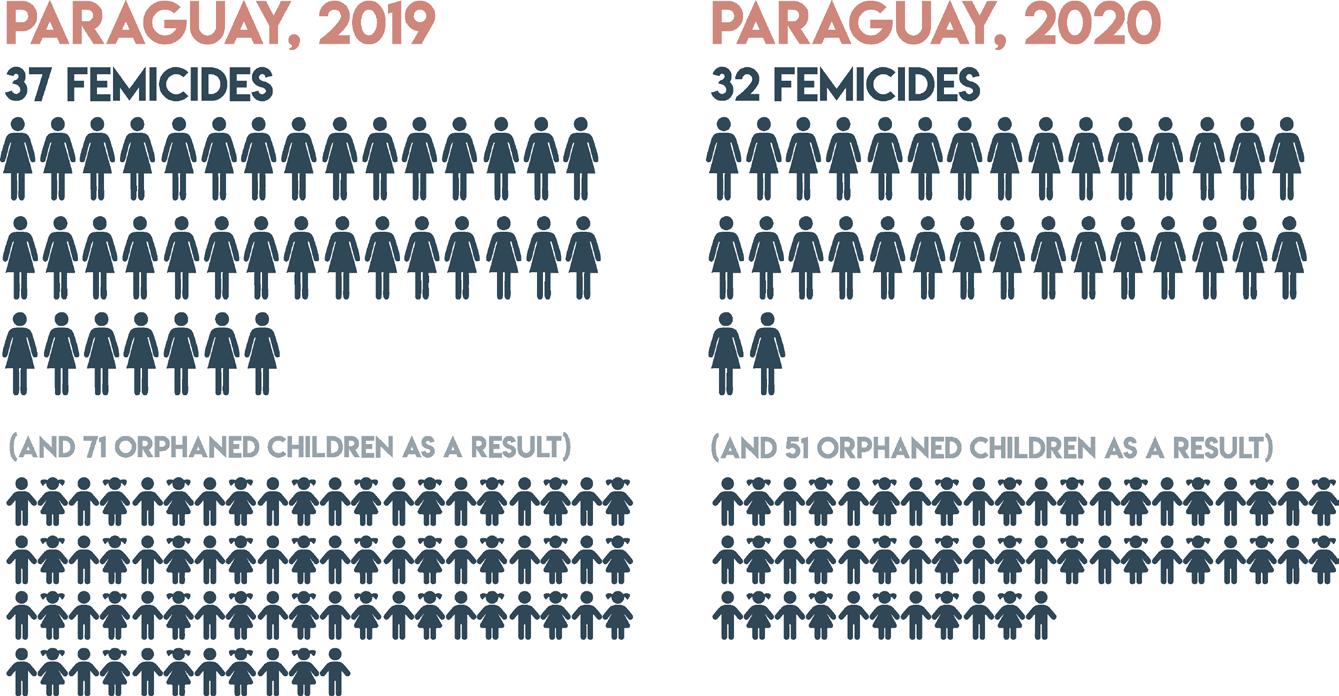
It should also be noted that murders of women are disproportionately perpetrated by their current or former intimate partner and are usually violent, vicious, or sexualized, which is seldom the case for male victims.
Image by Author.
DV can have a physical, sexual, emotional, or financial dimension, consisting of an assertion of control from the intimate partner onto the victim.
Deutsche Welle. 2020. COVID-19: ¿qué ha hecho América Latina para evitar más feminicidios? DW Akademie; María José Martínez. 2020. Quedarse en casa
10 Inter-American Commission on Human Rights. 2013. Annual Report of the Inter-American Commission on Human Rights 2012. Washington, DC: Inter-American Commission on Human Rights.
architecture and DOMESTIC VIOLENCE
It is relatively common for DV victims to experience physical and mental health issues because of their traumatic experience, but the design of DV shelters is not usually focused on tackling these issues.
Abusers are usually not detained immediately or for a long period of time, so one of the priorities for DV shelters is to ensure the safety of the survivors, which can often result in the victim feeling incarcerated themselves.
According to a qualitative study on perspectives of DV victims, about 35% of adolescents that accompany their mothers to DV shelters associate them with a prison. This is unsurprisingly a source of stress, as survivors usually feel a lack of control and autonomy.
The programmatic requirements for a refuge for vulnerable women include spaces that address their health and social needs, e.g. indoor and outdoor gathering spaces, therapy rooms, and private living areas for individual residents or mothers with children.
It should also be considered how a building can reduce stress in the user. Stress can be caused by one or more external conditions such as pressure, fear, significant life changes, lack of control, uncertainty, sense of unfulfillment, among others.
Domestic Violence Shelters In Paraguay
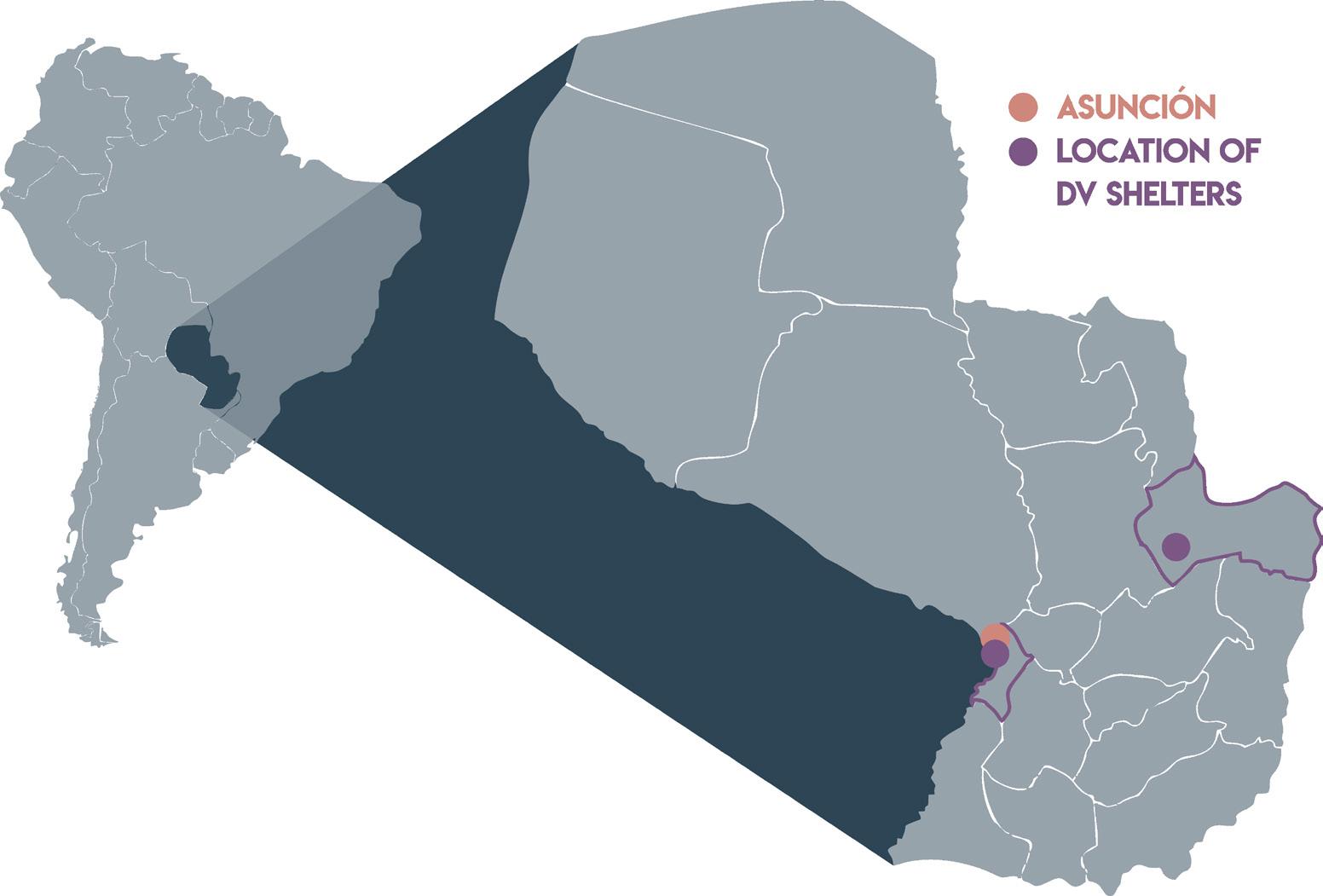
The two government-run DV shelters in Paraguay provide temporary housing, personal security, psychological care, legal assessment, medical attention, occupational therapy, workshops about women’s rights, scholar support for children and introduction to programs for generating income.
Their specific location and other features are usually not disclosed, as confidentiality preserves the victims’ safety. Most information regarding these shelters included in this research was gathered in interviews.
Interviews
These were conducted remotely, and an invitation to visit the refuge in Villa Elisa was declined given the impossibility to travel overseas.
Interviewees:
Mrs. Liliana Zayas Guggiari former Vice Minister of Protection of Women's Rights
Mrs. Mirtha Elias former Vice Minister of Technical and Administrative Affairs
Both dependent of the Ministry of Women which manages two Shelters for Women Victims of DV.
These shelters offer an integral support to women who are unable to remove the abuser from their homes and have nowhere else to go. They foster women of legal age who are victims of DV, with the exception of “girl mothers” (children victims of rape who have become pregnant), who are considered adults. They all enter voluntarily, and the permanence is not obligatory.
Women must meet certain criteria to be admitted and they usually come referred from hospitals or police stations, as well as by calling the emergency phone number.
Surprisingly, the shelters have not been filled, although they can only foster 50 people (including women and their children). This is probably due to lack of communication.
The main objective of the shelters is the reintegration of women into society with psychological and economic empowerment gained during their stay in the shelters. Since women victims of DV are usually subjugated to their partners who confine them to household chores, without the possibility of accessing education or sources of income, it is fundamental that the shelters offer integral, multidisciplinary support.
However, they do not offer medical assistance. Instead, women are derived to nearby hospitals or health centers whenever needed. They also lack accessibility, as every dormitory is on the second floor but there are no ramps or elevators.
Besides these two shelters, there are other two regional transitory centers which are for emergency only and do not offer the same psychological support as the two mentioned before.
12 Amy Chanmugam. 2011. Perspectives on U.S. domestic violence emergency shelters: What do young adolescent residents and their mothers say? Child Care in Practice, 17, 393–415
13 Samantha Donnelly, Suzanne Dean, Shohreh Razavy & Tracy Levett-Jones. 2019. Measuring the impact of an interdisciplinary learning project on nursing, architecture and landscape design students’ empathy.
14 Mind for better mental health. 2017. Stress.
In 2020, Ciudad Mujer Móvil (Women’s Mobile City) toured the country offering a variety of services, from health checks to ID renewal, only accessible for women who passed a short interview with a social worker, during which many DV cases were detected. This campaign, as well as all the Women’s Shelters, were possible thanks to funds donated by international organizations. The Government’s funds are insufficient, and they are usually reprogrammed into other projects rather than invested into the Ministry of Women, to which they have been assigned.
According to Law 5777, each Departmental Government should implement DV shelters under the coordination and technical support of the Ministry of Women . Only two of the 17 Departments currently follow this.
There are projects to establish new shelters in the Departments of Alto Paraná and Itapúa, which are the second and third most populated departments in the country, after Central.
SITE selection
While the department of Itapúa already has a transitory shelter for women victims of DV, Alto Paraná has no facilities destined to help them.
Its capital, Ciudad del Este is the second most populated city and the district with the most DV reports in the country. It is in the “Triple Frontier”, neighboring Brazil and Argentina, which is relevant as violence tends to be greatest near the borders, especially when bordering with Brazil.
Site Analysis
Its location makes Ciudad del Este a commercial hotspot, with many opportunities for international trade and employment.
It is located West of the Paraná River which separates Paraguay from Brazil and Argentina.
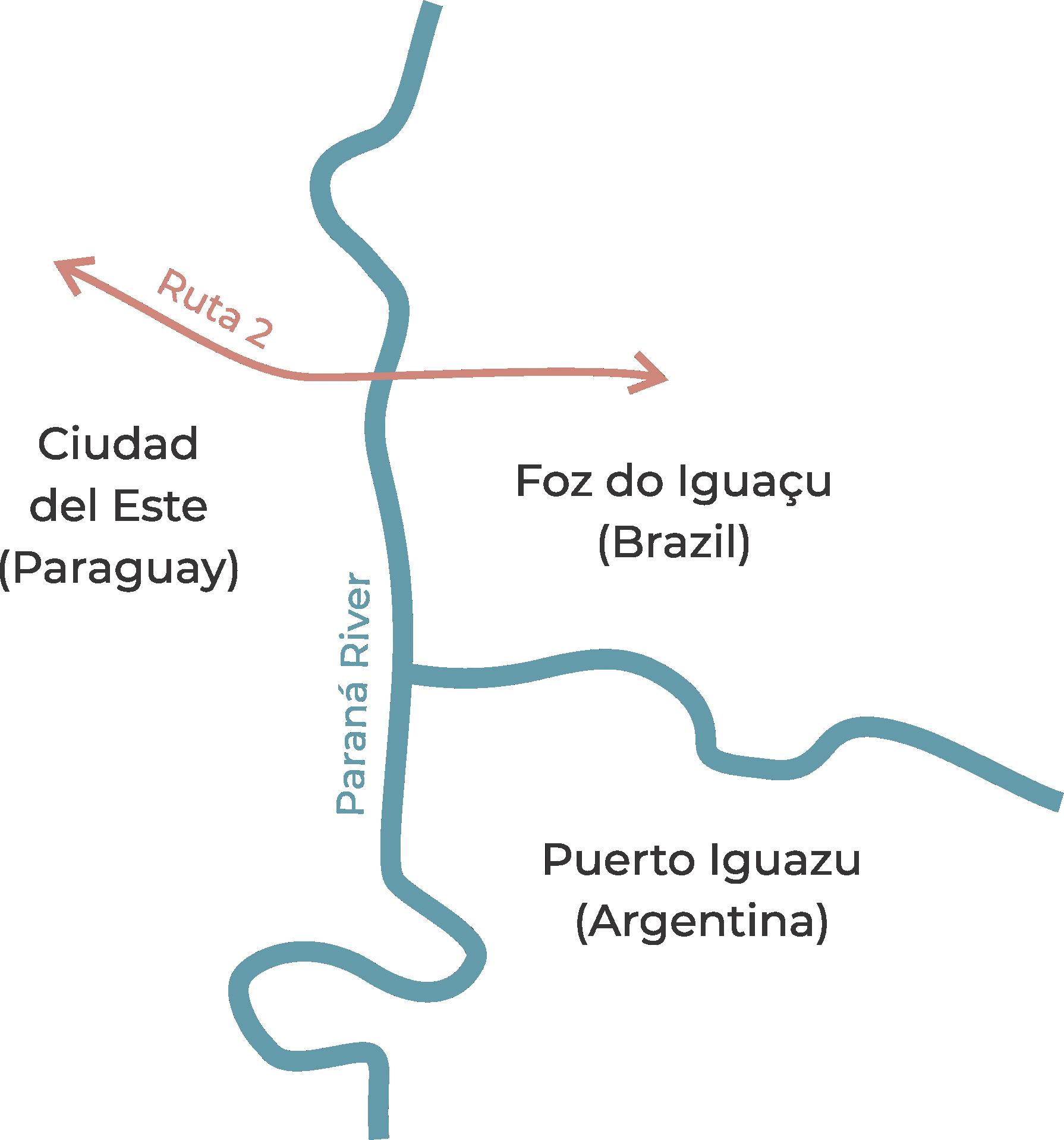
Ciudad del Este is the largest of the three neighboring cities.
Average monthly income of Alto Paraná employed uneducated population over 15 years of age


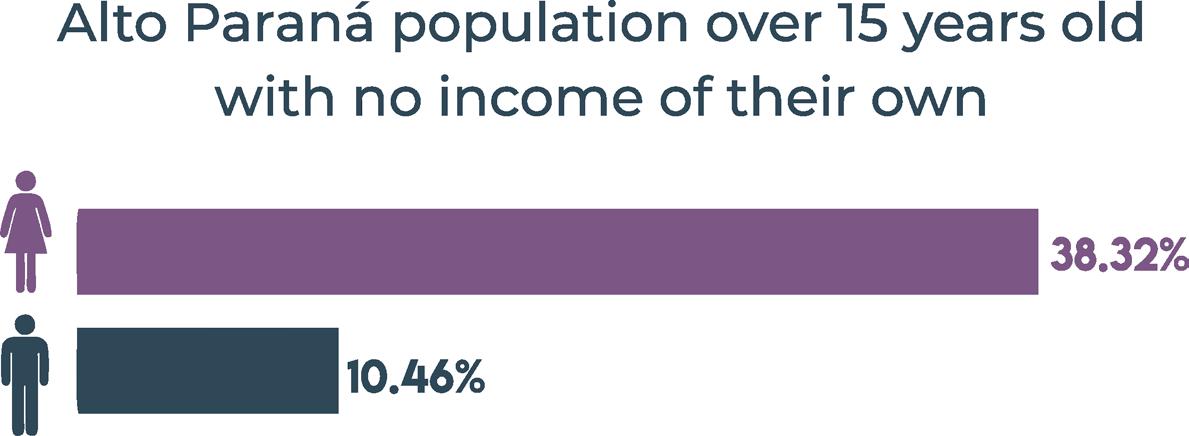
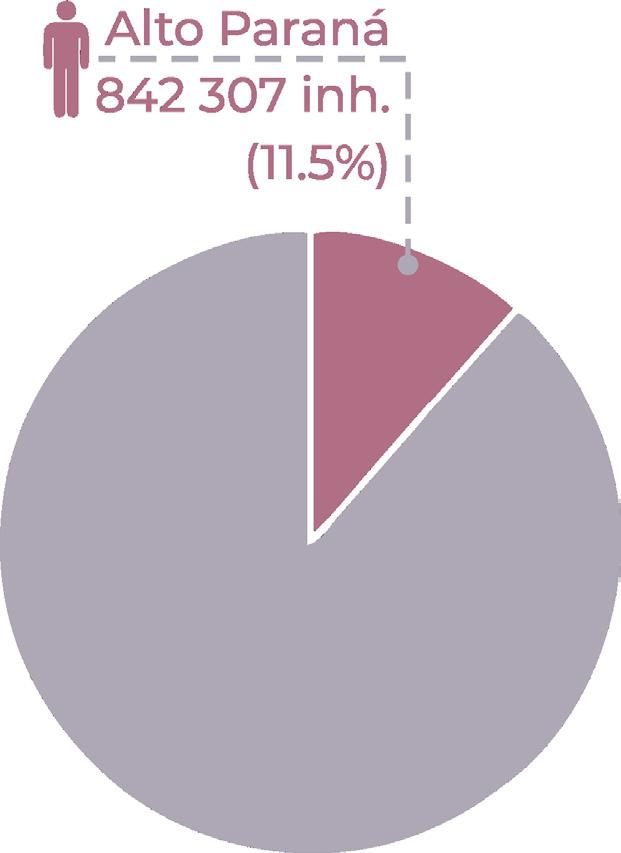
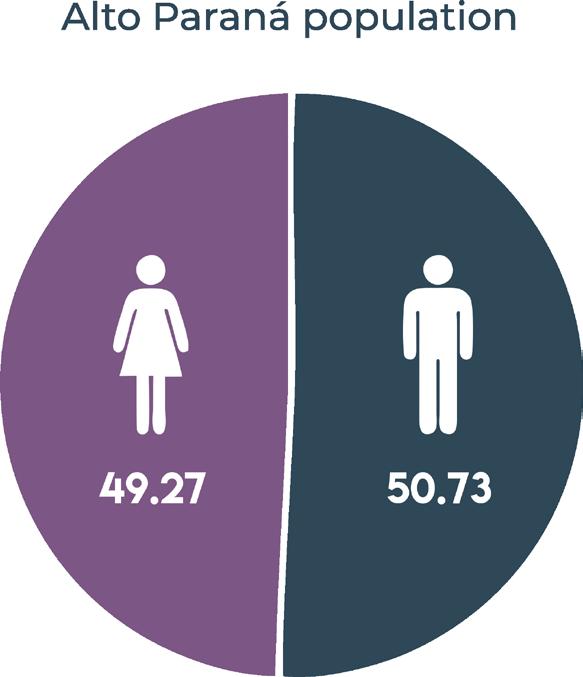
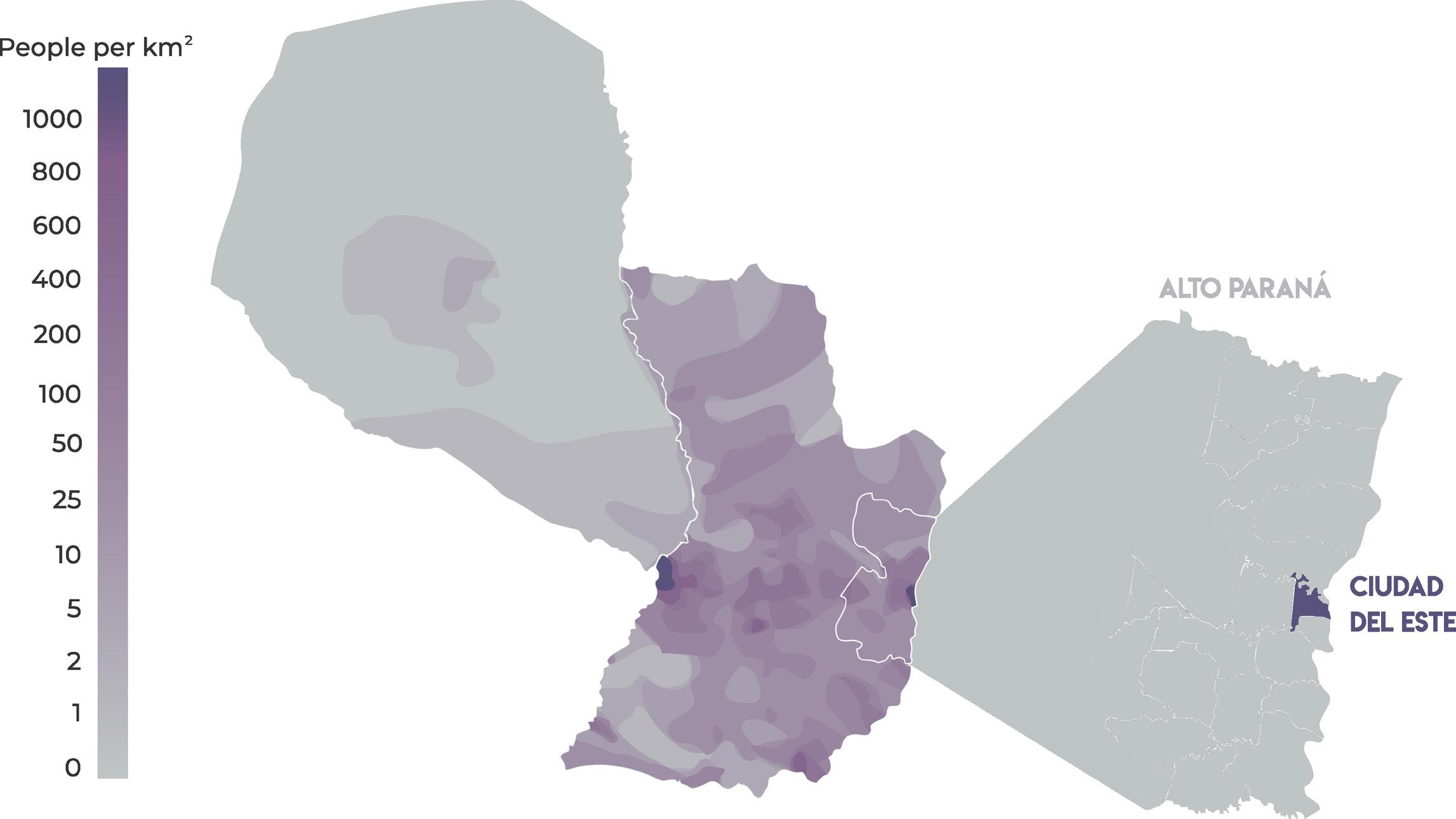
The remaining areas are mainly residential. The selected area for the project is the San Lucas and Santa Ana neighborhoods, due to the services located there: parks, the Regional Hospital, a police station, and considering it is a relatively safe and calm, middle-class residential area.
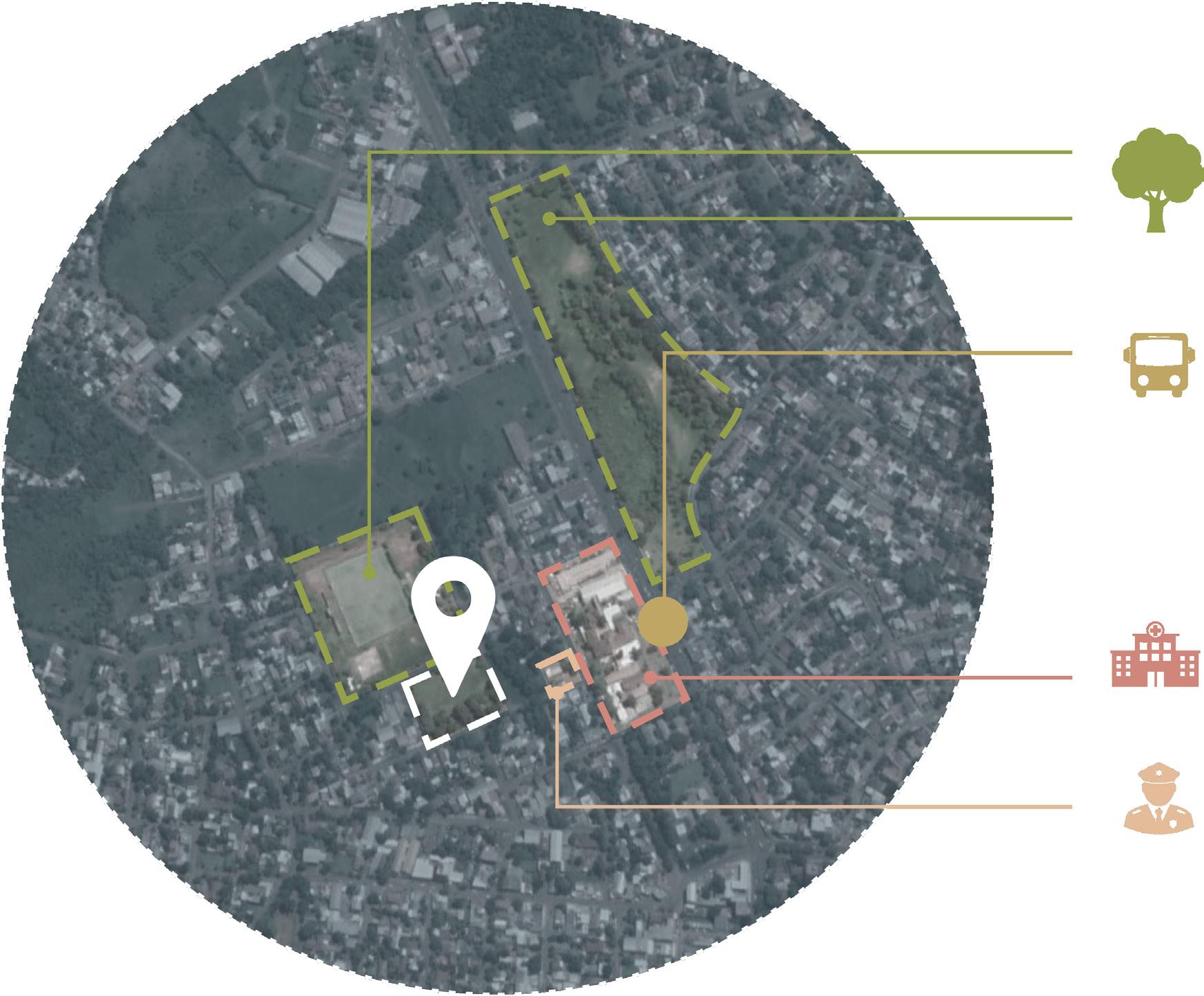
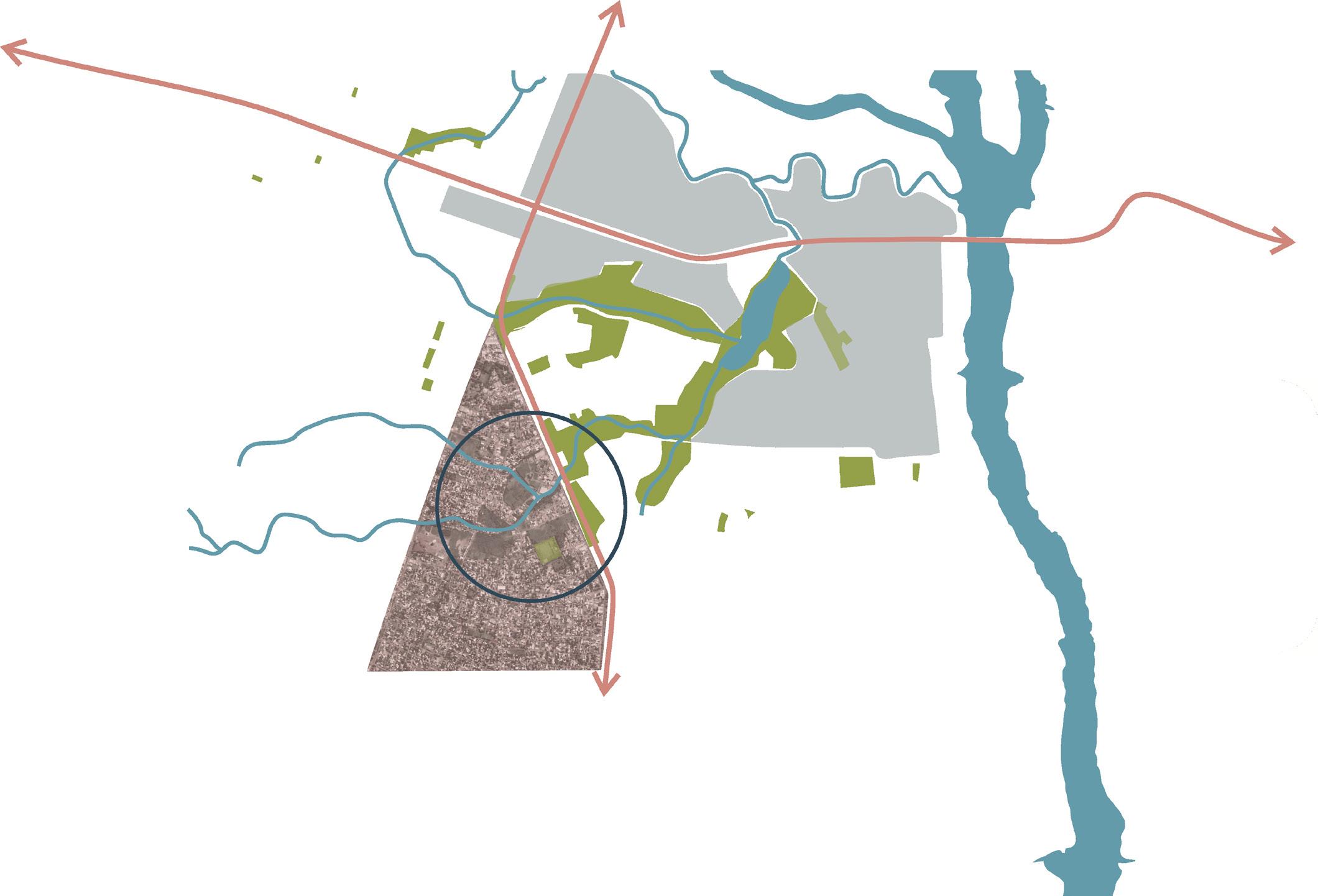
REFERENCES
Commercial Areas
Residential Areas
San Lucas and Santa Ana neighborhoods
Green Areas
Bodies of water waterways
Important routes
Brazil
The Microcentro is where most of the businesses and markets are located. It is strategically situated near the Puente de la Amistad.
West of the Microcentro is the warehouse district.
The specific site is two streets away from the Regional Hospital, which serves the Alto Paraná department and is the largest in the region. There is also a Police Station behind the Hospital.
These are the two most common places where victims of DV go to seek help, either to get treatment for their injuries or to denounce their abusers, and they could be derived to the shelter easily, if required.
The site is currently vacant, except for about a dozen trees on one side of the lot.
REFERENCES
Commercial Areas
Residential Areas
San Lucas and Santa Ana neighborhoods


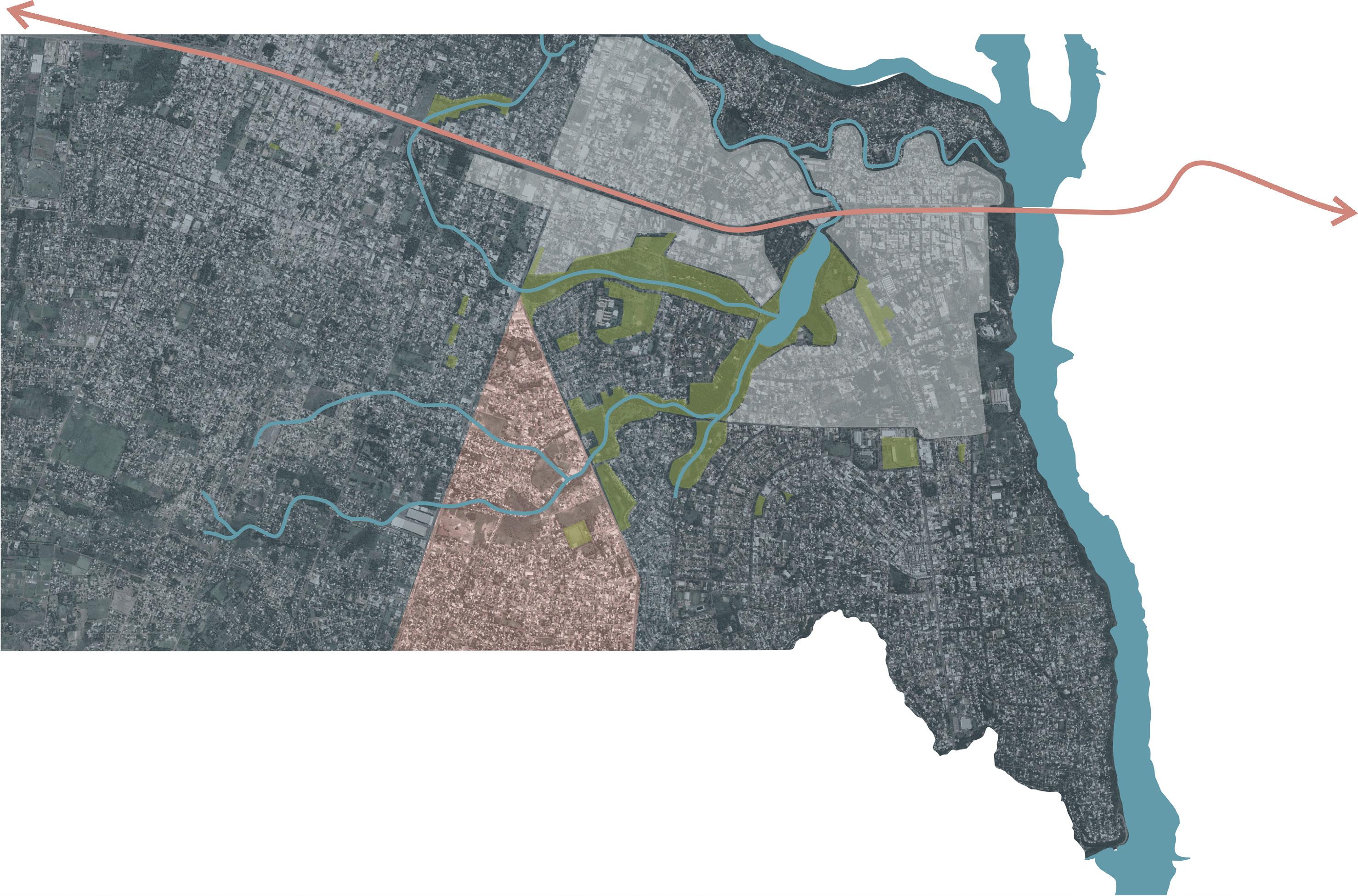
Green Areas
Bodies of water waterways
Important routes relevant design elements and strategies


Shelter For Victims Of Domestic Violence
Amos Goldreich Architecture
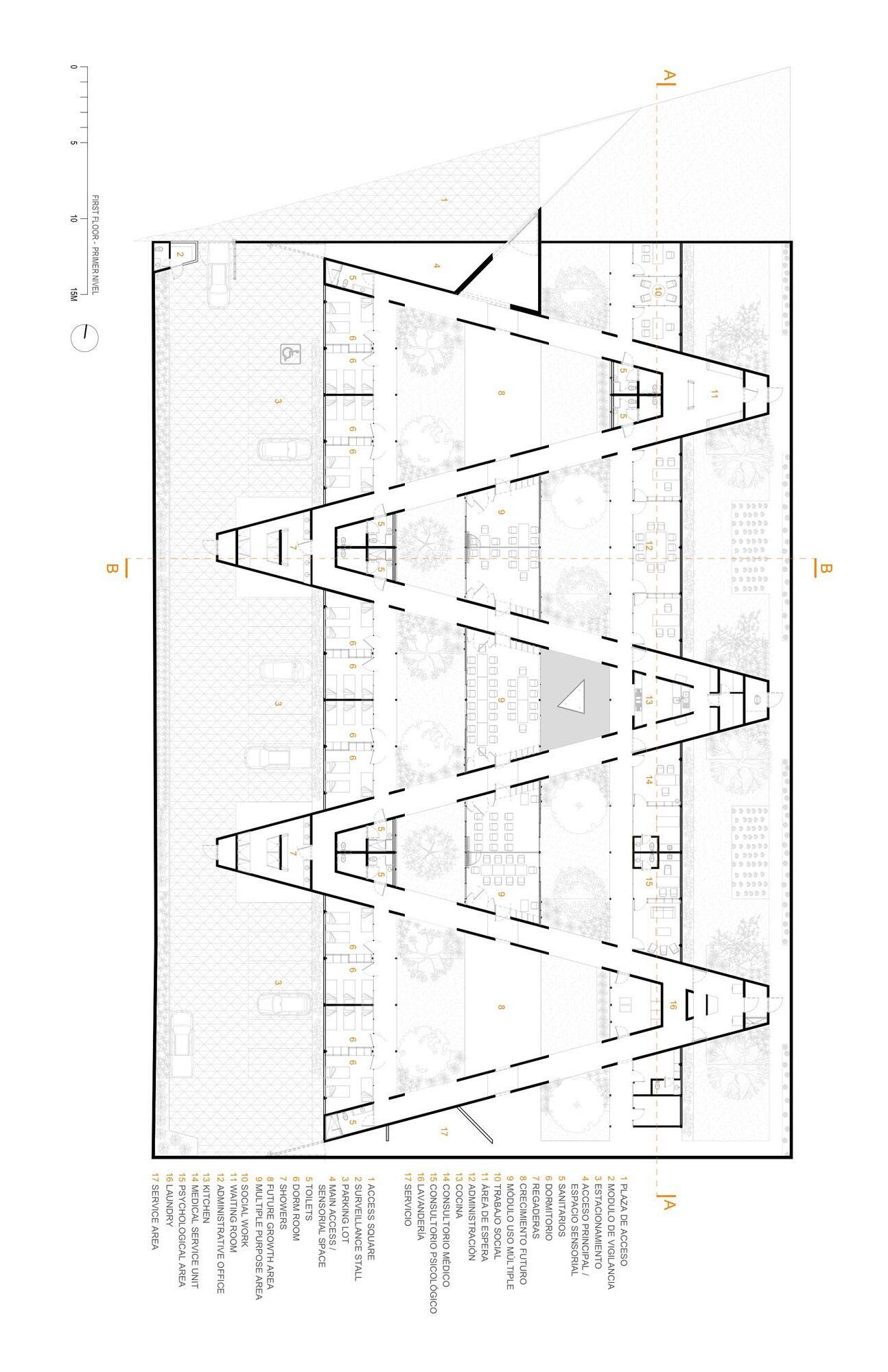
+ Jacobs Yaniv Architects
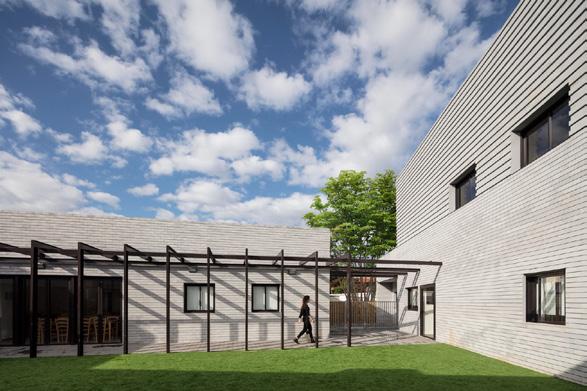
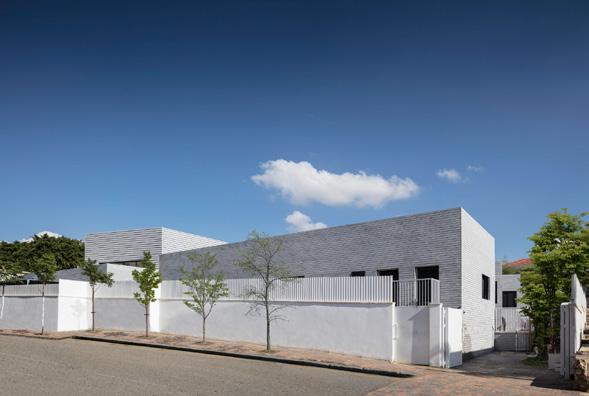
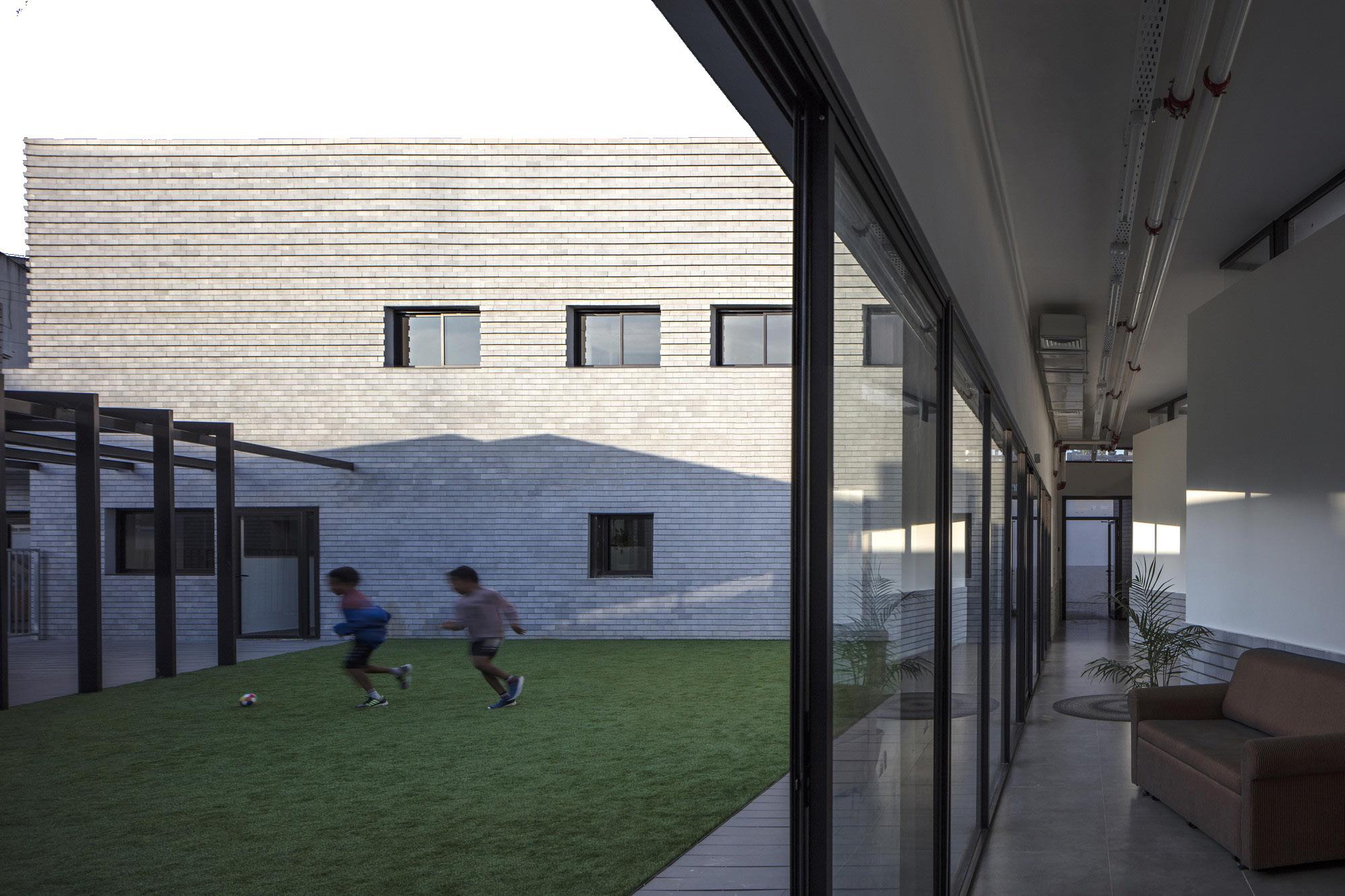
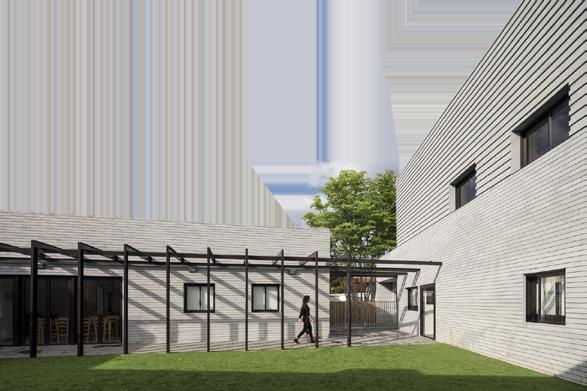
Location: Israel





